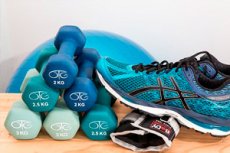Medical expert of the article
New publications
Motor activity and human health in old age
Last reviewed: 08.07.2025

All iLive content is medically reviewed or fact checked to ensure as much factual accuracy as possible.
We have strict sourcing guidelines and only link to reputable media sites, academic research institutions and, whenever possible, medically peer reviewed studies. Note that the numbers in parentheses ([1], [2], etc.) are clickable links to these studies.
If you feel that any of our content is inaccurate, out-of-date, or otherwise questionable, please select it and press Ctrl + Enter.

Movement is life! It is especially important to understand this maxim for older people, because physical activity helps maintain a person's health in old age, and also:
- stimulate metabolic processes, functions of autonomic organs and systems based on the principle of motor-visceral reflexes;
- maintain an optimal ratio of excitation and inhibition processes in the cerebral cortex due to afferent impulses from muscle proprioceptors;
- improve blood supply to the cerebral cortex, increase myocardial contractility, improve coronary blood flow by opening reserve capillaries;
- increase pulmonary ventilation and the intensity of gas exchange in the lungs;
- stimulate contraction of the smooth muscles of the gastrointestinal tract;
- prevent the accumulation of excess fatty tissue, reduce the level of lipids in the blood and prevent the deposition of cholesterol on the walls of blood vessels;
- activate the endocrine system;
- strengthen muscles, ligaments, maintain joint mobility, reduce osteoporosis;
- improve the emotional state of an elderly person, giving a feeling of vigor and cheerfulness;
- increase the body's adaptive capacity.
Thus, physical activity in old age stimulates the process of vitauct and contributes not only to the prolongation of life, but also to the improvement of its quality. It is necessary to support and develop the desire of an elderly person for physical exercise, but they must take into account the changes occurring in the aging body, since excessive load can stimulate the development of decompensation of the functions of organs and organ systems.
When exercising, an elderly person needs to remember the following:
- Before increasing physical activity, you should consult your doctor;
- movements should not be abrupt, associated with acceleration, lifting heavy weights, or rapid changes in body position;
- avoid exercises that involve straining and holding your breath (this increases pressure in the pulmonary circulation, in the vessels of the brain, impedes blood flow to the heart, and can contribute to the development of pulmonary emphysema);
- perform exercises at a slow pace, do not repeat them too often;
- adaptation to loads occurs much more slowly than in youth, therefore it is recommended to increase loads gradually, by 5-10% per week;
- systematic monitoring of your well-being is necessary: determining your pulse during exercise (its maximum frequency should be 180-200 - age), examination by a doctor at least 2 times a year, keeping a well-being diary;
- The workout should include a thorough warm-up, stretching exercises and cool-down after each session;
- you should not perform exercises “by force”, after the exercises there should be a feeling of pleasant fatigue and satisfaction;
- classes should be systematic.
Recommended types of physical activity include morning and evening hygienic gymnastics (consisting of 8-10 types of exercises for all muscle groups). Walks, dosed walking, dance classes are useful; if you have the skills - swimming, badminton, tennis, skiing, cycling, rowing at a leisurely pace (training for 45-60 minutes 2-3 times a week).


 [
[